Last updated on August 28, 2025
Have you seen your organic search traffic change drastically in a matter of hours or days? It’s possible that your website has been affected by a recent Google update.
See the list of recent Google updates
Google updates can deal serious blows to businesses that rely on organic traffic for revenue, e.g. through online ads, affiliate links, or by selling products online.
Especially Google’s “core updates” are well-known for their sudden and significant impact, often leaving website owners wondering what they did wrong and how to recover their search traffic.
That’s why, in this article, we’re going to cover:
- what a Google (core) update is
- a protocol of the biggest Google updates of the past years
- what you should do if you’ve been hit by a Google (core) update
After reading this article, you’ll know what to do to rebound after a Google update, avoid major impacts on your business and get your website ready for future updates!
What is a Google update?
Google’s search engine uses complex algorithms to rank its search results, taking hundreds of different factors into account. Google adjusts these factors and its search engine in general several thousand times a year. These ongoing adjustments impact the presentation of search results, ranking factors, recognition of search intent, and much more.
Most of these updates are minor changes that don’t have a noticeable impact on the overall SERPs. But several times per year, Google launches significant updates that are officially announced and often have a considerable impact on search results. Known examples of major Google updates have introduced page experience as a ranking factor, impacted local search, or improved Google’s understanding of search intent. We’ll cover these and other examples below.
What is a Google Core Update?
Google Core updates are a special type of update that Google releases multiple times per year. In contrast to other big updates, Google Core Updates are changes to the core algorithm and not to individual ranking factors.
While other updates often have a clearly defined target (e.g. the introduction of a new ranking factor or new technology), Google Core updates are focused on improving the overall quality of results users get from the Google search engine. They’re part of Google’s efforts to present relevant and authoritative content to searchers.
Google always announces a new core update via Twitter and names it according to the month and year of its release (e.g. “May 2022 Core Update”).
Today, we're releasing a broad core update, as we do several times per year. This update is called the May 2022 core update. Learn more: https://t.co/7kFklwdkAb
— Google Search Central (@googlesearchc) May 25, 2022
Summary of major Google updates since 2018
Below, we’ll cover the most impactful updates in the past years – both Core updates and significant other updates. As Google continues to make major updates to its algorithm, we’ll update this summary, so you can always come back here to learn about the most recent changes.
Note: You probably have heard of other major, well-known updates before 2018, such as Panda, Penguin, or Hummingbird. We’ll only go back to 2018 here since that’s when Google first announced a “Broad Core Algorithm Update” as we know them today.
The list is based on Google’s official ranking update release history. We’ve added a summary of the key facts as well as links to more information and analyses for the big and relevant updates.
2025
August 2025 Spam Update
started on August 26
On August 26, 2025, Google began rolling out a new spam update. The update is applied globally across all languages and regions and is expected to take several weeks to complete. It targets sites that violate Google’s spam policies, so if you see a negative impact on your rankings, you should check Google’s guidelines.
June 2025 Core Update
June 30 – July 17
Google described the June 2025 Core Update as a “regular update designed to better surface relevant, satisfying content for searchers from all types of sites.” While some sites previously hit by the September 2023 Helpful Content or March 2025 Core updates regained visibility, others continued to decline.
According to an analysis by Search Engine Journal, the update may be based on two new technologies recently announced by Google. Both technologies contribute to Google’s ability to identify patterns of trustworthiness and authoritativeness.
March 2025 Core Update
March 13 – 27
The March 2025 Core Update was a regular core update. According to Google, it should surface more content from creators in the search results – more improvements for them are planned for the rest of the year. The impact of this update was not as widespread as with previous core updates.
2024
December 2024 Spam Update
December 19 – 26
Just one day after completing the December 2024 Core Update, Google released the December 2024 Spam Update. The update was completed on December 26th. This was a general spam update that did not target a specific type of spam only. If you are affected by this update, we recommend that you take a look at Google’s spam policies.
December 2024 Core Update
December 12 – 18
Just a week after completing the November 2024 Core Update (see below), Google has started rolling out the December 2024 Core Update. Google explained the release of two core updates in a short period of time with the fact that there are several different “core systems” that can be affected by an update.
Unlike other core updates, which often take much longer, this update was completed in just 6 days. Overall, it had a greater impact than the November core update, but less of an impact than other core updates in the past.
November 2024 Core Update
November 11 – December 5
This core update was a typical core update with the aim of showing more quality and helpful content in search results. It seems to have been a smaller update compared to previous core updates.
August 2024 Core Update
August 15 – September 3
On August 15, Google started the rollout of the August 2024 Core Update which was completed on September 3rd. According to the official statement, this update aimed to display more useful content in search results and less content that is created for SEO purposes only. It also took into account the feedback Google had received in the previous months about the quality of search results.
In the announcement, Google also explicitly mentioned small and independent sites:
“As always, we aim to connect people with a range of high quality sites, including small or independent sites that are creating useful, original content, when relevant to users’ searches. “
This left many SEOs hoping for a recovery for smaller sites that were hit hard by the September 2023 Helpful Content Update. However, the August 2024 Core Update only resulted in limited recoveries for a relatively small number of websites. Some sites even declined further due to the update.
Google has also updated the Core Updates help page to provide more specific tips for site owners affected by a core update.
Please note: Between August 16 and August 20, Google also experienced search results issues that affected a large number of search results. However, these issues are unrelated to the core update. So if you noticed unusual changes in your rankings in this time frame, it does not necessarily mean that you were affected by the core update.
June 2024 Spam Update
June 20 – 27
The June 2024 Spam Update was a regular spam update that improved Google’s ability to detect different types of spam. If you see a negative effect on your rankings due to this update, you should take a look at Google’s spam policies.
March 2024 Core Update & Spam Update
March 5 – March 20 / April 19
After there have been several complaints and even a study about the declining quality of Google search results in the previous months, Google promised a major improvement to Google Search with the March 2024 Core Update. With this update, Google aimed to deliver more high-quality, unique results that are truly useful to users. In contrast, content that is created to manipulate rankings should be removed from search.
According to Google, the March 2024 Core Update built on the Helpful Content Updates that started in 2022, and integrated the results of these updates into the Core algorithm. This means that there is no longer a separate “Helpful Content System”, but the core algorithm now includes several signals for evaluating Helpful Content. As a result, there will be no more isolated “Helpful Content Updates” in the future. During the course of this update, it was indeed observed that sites that had already been affected by the September 2023 Helpful Content Update were negatively impacted again.
This update was a much more complex Core Update than usual, as several ranking systems were being updated. It took much longer than originally announced and was not completed until April 19. With the end of this update, Google also provided a feedback form which can be used until May 31 to report general issues with the quality of search results, as well as individual cases of sites being removed from the top 10 results. Google said it may take this feedback into account for future Core Updates.
At the same time, Google also rolled out a Spam Update with new and improved spam policies to keep low-quality results out of search results.
The new spam policies that Google introduced as part of the Spam Update target the following types of spam:
- “Scaled content”, which is content that is produced automatically and in large quantities and provides no real value to the user.
- “Site reputation abuse”, which is the exploitation of a website’s high reputation by third parties publishing low-quality content on that domain – also known as “parasite SEO”.
- Using expired domains to boost the ranking of low-quality content.
As a consequence of the new spam policies, a large number of manual penalties were observed, with entire sites being removed from search results, including some sites with a high volume of purely AI-generated content.
The Spam Update was completed on March 20 (with the exception of the “Site Reputation Abuse” policy, which only took effect on May 5).
Taken together, the updates resulted in a 45% reduction in low-quality search results according to Google.
In addition to the usual recommendations for Core Updates (see below), you should also go through Google’s recommendations for creating Helpful Content if you’ve experienced a negative impact on your rankings as a result of the March 2024 Core Update.
2023
- November 2023 Reviews Update (November 8 – December 7):
Simultaneously to the November 2023 Core Update, Google started rolling out the November 2023 Reviews Update. According to Google, this was the last time that a reviews update was officially announced, and in the future they will just happen on a regular basis without any announcements. - November 2023 Core Update (November 2 – 28):
Google’s series of updates doesn’t seem to stop. Right on the heels of 4 updates in the last three months, Google released the November 2023 Core Update on November 2. Google explained that it was released so soon after the last core update (which was in October) because it targeted a different core system than the previous update. - October 2023 Core Update (October 5 – 19):
Just one day after announcing the October 2023 Spam Update, Google also began rolling out the October 2023 Core Update. This update was the 3rd Google Core Update of 2023 and it caused significant ranking volatility according to SERoundtable. In addition, there have been complaints about copied and scraped content ranking higher than the original source of the content after the update. - October 2023 Spam Update (October 4 – 20):
This update aimed to improve Google’s spam detection system for certain types of spam and languages. In particular, websites that use cloaking, auto-generated or scraped spam content as well as hacked websites were targeted. The detection of such content was improved for languages like Turkish, Vietnamese, Indonesian, Hindi, Chinese, and others. You can find more information about this on Google Search Central. - September 2023 Helpful Content Update (September 14 – 28):
This update is the third “Helpful Content Update” and aims to improve Google’s helpful content classifier. You can learn more about Google’s Helpful Content System and what to do if you’ve been hit in our dedicated Helpful Content Update article. - August 2023 Core Update (August 22 – September 7):
More than 5 months since the last Google Core Update, Google rolled out the “August 2023 Core Update” on August 22 which was completed on September 7. - Sites with user-generated content gained a lot of visibility.
- There were also increases for sites that show “Experience” and decreases for review sites that lack experience. This shows that Google is now incorporating the recently added experience factor into its E-E-A-T evaluation.
- The government and education sectors, which tend to be high E-E-A-T, also saw gains.
- April 2023 Reviews Update (April 12 – 25):
The April 2023 reviews update was an important extension of Google’s previous product reviews updates. This update not only affected product reviews (as previously), but all types of reviews (e.g., for services, media, travel destinations, etc.). Google’s recommendations for writing quality product reviews have also been updated to cover “high quality reviews” in general. This means that from now on Google’s reviews updates will be relevant to an increased number of website owners. - March 2023 Core Update (March 15 – 28):
On March 15, Google announced the March 2023 Core Update via Twitter which was completed on March 28. Compared to previous core updates, the update had a very strong impact on search results. - February 2023 Product Reviews Update (February 21 – March 7):
The February 2023 Product Reviews Update is Google’s 6th product reviews update. These updates aim to improve Google’s evaluation of websites publishing product review content. Unlike previous product reviews updates, the February update affected languages other than English for the first time. Also, the impact on search results was stronger than with the previous versions. See Google’s official blog post for more information.
According to Search Engine Land, this move suggests that the reviews update process is heading towards a more real-time system. As a result, changes to a site, whether positive or negative, may be reflected in Google’s reviews system more quickly than before.
For advice on how to deal with this update, check out Google’s guidelines for writing high-quality reviews.
Along with this announcement, Google also published a “Q&A on Google Search updates” that answers common questions about how and why Google makes these updates, and what you should consider if your site is affected by one.
The update hit hard and fast according to Search Engine Land with the first effects visible almost immediately after its launch. It also seems to have had a stronger overall impact than the October Core Update.
The rollout took an unusually long time to complete – a Core update usually takes about two weeks to roll out. Google’s John Mueller said that this was due to security reasons, among other things.
Analyzing the isolated impact of this core update is a significant challenge, as it was rolled out at the same time as the October Spam Update. Given this overlapping rollout, Google has provided some clarification for those experiencing negative effects. They stated that if you’re not publishing spam, then any negative impact should be related to the Core Update.
In terms of size, this was indeed a significant update, as many data providers confirmed. However, it was hard to observe any major trends regarding the types of industries affected by this update due to the parallel rollout with the spam update.
Depending on which ranking data provider you look at, there seems to be no real consensus on whether this was a small or big core update. Analyzing the impact of this update is also made more difficult by the fact that it was released during a period of high ranking volatility in general.
According to an analysis by SEO expert Lily Ray, the update showed the following tendencies:
According to SEO expert Lily Ray, the update may show the effects of the latest update to Google’s Quality Rater Guidelines which included the expansion of E-A-T to E-E-A-T. Websites that clearly demonstrate first-hand experience have benefited from the update. Her analysis also shows that dictionary and reference sites were particularly impacted as well as the categories eCommerce, travel, reviews, health and entertainment. What’s also worth mentioning: websites that merely collect information from other websites without offering their own product/service are among the losers of this update. This shows an important direction at a time when more and more AI-generated content is flooding the web.
2022
- December 2022 Link Spam Update (December 14 – January 12):
This is a global update affecting all languages. The update aims to improve the detection of unnatural links by Google’s AI system “SpamBrain”. In particular, the system is now able to detect purchased links more effectively, as well as domains that serve the sole purpose of creating backlinks to other websites. You can find more information in this summary on Search Engine Journal. - December 2022 Helpful Content Update (December 5 – January 12):
This update is an improvement of Google’s helpful content classifier which was released in August 2022. Contrary to the first Helpful Content Update, this one affects content in all languages (not only English).You can find recommendations for how to react to this update in our original post on Google’s Helpful Content Update. - October 2022 Spam Update (October 19 – 21):
Unless you publish spam on your website, this update probably won’t affect you. Learn more about Google’s spam updates here. - September 2022 Product Reviews Update (September 20 – 26):
This update overlapped with the September 2022 Core Update (see below). In case you are affected, you’ll find Google’s recommendations on how to write high-quality product reviews here. - September 2022 Core Update (September 12 – 26):
This update seemed to be less impactful than previous core updates. It also overlapped with another update, the September 2022 Product Reviews Update.According to an analysis by Lily Ray, government and music sites won, whereas news sites and stock photography sites lost organic traffic due to the update. Other particularly impacted niches include lyrics and dictionary sites.
Some SEOs speculated if the update could be related to the Helpful Content Update, but Google didn’t confirm this. - Helpful Content Update (August 25 – September 9):
Google introduced a new ranking signal aiming to detect and downrank low-quality content created for the sole purpose of ranking high in search. Read more in our post on Google’s Helpful Content Update. - July 2022 Product Reviews Update (July 27 – August 2)
- May 2022 Core Update (May 25 – June 9):
This core update seemed to have a smaller effect than the November 2021 Core Update. Read more in our summary of the May 2022 Core Update. - March 2022 Product Reviews Update (started on March 23)
- Page Experience Update for Desktop (February 22 – March 3):
Following last year’s page experience update for mobile search, this update implemented the same ranking criteria for desktop experiences. Google Search Central detailed the update in this post.
2021
- December 2021 Product Reviews Update (December 1 – December 21)
- November 2021 Local Search update (November 30 – December 8):
Neural matching was introduced to the process of matching local searches with local search results. Ranking factors remain relevance, distance, and prominence, according to Google’s guidance. - November 2021 Core Update (November 17 – November 30):
This update was slightly odd compared to previous core updates as Roger Montti of Search Engine Journal explains in this summary of the November 2021 Core Update impact. - November 2021 Spam Update (November 3 – November 11)
- July 2021 Link Spam Update (July 26 – August 24)
- July 2021 Core Update (July 1 – July 12):
This update was part 2 of the June 2021 Core Update. Learn more in our Google (Core) Updates in June and July 2021 overview. - June 2021 Spam Update (Part 1 on June 23, Part 2 on June 28)
- Page Experience Update (June 15 – September 2):
This update introduced Google’s Core Web Vitals as official ranking factors for mobile search. - June 2021 Core Update (June 2 – June 12):
As we covered in our summary of the June 2021 Core Update, the data on this update wasn’t very clear and to some parts even contradictory. It also differed slightly from other core updates by not affecting the typical YMYL niches. - April 2021 Product Reviews Update (April 8 – April 22)
- Passage Ranking Update (February 10):
Google added a new ranking factor that’s able to identify relevant passages buried deep within your page content. You can learn more in our summary of the Passage Ranking Update and in this one-hour chat with Google’s Martin Splitt.
2020
- December 2020 Core Update (December 3 – December 16):
As we covered in our December 2020 Core Update summary, this update had a large impact across all industries. But according to this analysis by David McSweeney, it also caused some collateral damage. - May 2020 Core Update (May 4 – May 18):
As the first to follow the global spread of Covid-19 this core update impacted sites with thin content as well as local SERPs and aggregators/directory sites. Learn more in the SEJ update summary. - Featured Snippet Update (January 22):
Before this update, page 1 of search results could contain a snippet of the site that had also been awarded the Featured Snippet position – also known as position zero. The update did away with this repetition. For more on the impact, see our summary of the Featured Snippet Update and this study in the Search Engine Journal. - January 2020 Core update (started on January 13):
According to Search Engine Land, this update was a big one and impacted a large number of websites.
2019
- BERT update (October 24 for English search, December 9 worldwide):
This update improved Google’s understanding of the meaning of particular words within a search query by looking at their context. The result was a better match of search results with search intent. Read more in our summary of the BERT update. - September 2019 Core update (started on September 24):
Besides the general tweaks in this update, link quality appeared to be a key area of focus with this update according to the summary on Search Engine Journal. - June 2019 Core update (started on June 3):
This core update was reported to be about more than just the E-A-T principle. Read more in this summary on Search Engine Journal. - March 2019 Core update (started on March 13):
This update seemed like a rollback of previous updates such as the Penguin update. Read more in our summary and analysis of the March 2019 Core Update.
2018
- Broad Core Algorithm Update (around August 1):
This update is referred to as “Medic,” because it was believed to target health sites in particular. This hasn’t been confirmed by Google, but Search Engine Journal put together an article sharing advice for sites affected by the “Medic” update. - Broad Core Algorithm Update (started on April 16):
Google confirmed this update and pointed to the official explanation and advice from March 2018. - Broad Core Algorithm Update (around March 12):
The focus of this update was content relevance as was confirmed by Google’s John Mueller in the April 2018 Google Webmaster Central office-hours hangout.
How to recover from Google updates (and prepare for future ones)
If you’ve been hit by a recent Google update, the first thing you should do is: gather as much information about the update as possible, and don’t panic. There are always ways to recover your traffic – it might just require some effort and patience.
Independent of the update that hit you, there are five basic steps you’ll want to take to recover:
- Read up on Google’s guidance regarding the latest update
- Take a look at the analysis from SEO experts and authorities
- Check to see how changes affected your site
- Follow Google’s guidelines on the specific update
- Grab your favorite caffeinated drink and await recovery
What does that look like in practice? As an example, let’s look at Google’s Helpful Content Update from August 2022:
1. Google Search Central shared a post on what creators should know.
2. After reading that, you’d head to resources like our Helpful Content Update post for analysis and reactions to the update.
(Tip: Bookmark this Google Update article – we are constantly updating it with key facts and helpful additional resources about new updates as soon as they become available!)
3. Now that you know what the update is all about, take a look at your own projects: You can use tools like Seobility’s keyword rank tracking, Google Analytics, or Google Search Console to stay on top of any changes to your site’s rankings and traffic.
4. If your content was impacted, go through the bullet points Google provides in its official guidance on the update to check if you have any content on your site that Google might consider “not helpful”.
If so, it’s worth taking the time to delete or update it. Then it’s a matter of pouring yourself a caffeinated drink and waiting for your traffic to recover. (And while you wait, you can spend the time creating more helpful content in your area of expertise.)
5.
How to recover from a Google Core update
Core updates are a matter for themselves. As Google emphasized several times, there’s no quick fix for recovery when your organic search traffic takes a heavy hit following a Google core update. The reason for that was already mentioned in the beginning: Google core updates don’t target individual ranking factors but instead change Google’s core algorithm.
Google core updates always aim to make Google’s search results better for users. And that means Google’s advice will always start in the same place: improving your content.
Take a step back and try to evaluate the overall quality of your website instead of focusing on a specific factor. As you can imagine, this is ongoing work – not a simple quick fix.
However, Google provides a list of questions to help you evaluate the quality of your content and create helpful content in its official Core Updates help article. The concepts of “helpful, people-first content” and “E-E-A-T” play a central role in this.
Lay the groundwork for recovery with people-first content and E-E-A-T
The concept of “helpful, people-first content” has been a hot topic since the first Helpful Content Update in 2022. The idea of it is to create content that puts the user at the center of all considerations, rather than content that is primarily focused on ranking well on search engines.
Creating such people-first content is essential to the long-term success of your site and to protect yourself from negative effects of future core updates. You can learn more about this in our article on Google’s helpful content updates and on Google Search Central.
The “E-E-A-T” concept is closely related to this. E-E-A-T is short for experience, expertise, authority, and trustworthiness. It’s not an individual ranking factor but instead summarizes a concept of high-quality content that Google wants to reward with its core updates. Content that performs well in terms of E-E-A-T is content written by experienced subject matter experts that are trustworthy and recognized as authorities in their niche.
The concept has historically been very important for sites labeled by Google as “your money or your life” (YMYL). These are sites on topics that help us make important life decisions, such as finance or health sites. But in the last few years, the concept has become more and more important for all types of websites.
When you evaluate your content, always ask yourself: Would you trust this piece of content enough to make real-life decisions based on it? Would you feel safe putting in your credit card details on another site with this piece of content?
If the answer to any of these is a hard no – you’ve got work to do. We’ve provided a detailed guide on how to improve your content’s E-E-A-T here on our blog.
When you follow these guidelines, it won’t improve your rankings overnight but it increases your chances to come out on top in future Core updates, making you a winner in the long term.
Prepare your website for future updates
Providing high-quality content will not only help you recover from a core update – it’s also essential to get your website ready for future updates. Because if there’s one central theme that most of Google’s recent updates have in common, it’s the importance of creating high-quality content that gives searchers exactly what they are looking for.
Of course, this doesn’t guarantee that you will never get hit by a future Google update. But it’s the least you can do (besides optimizing your website with Seobility ) to increase your chances of standing on the winning side when Google’s algorithm strikes again.

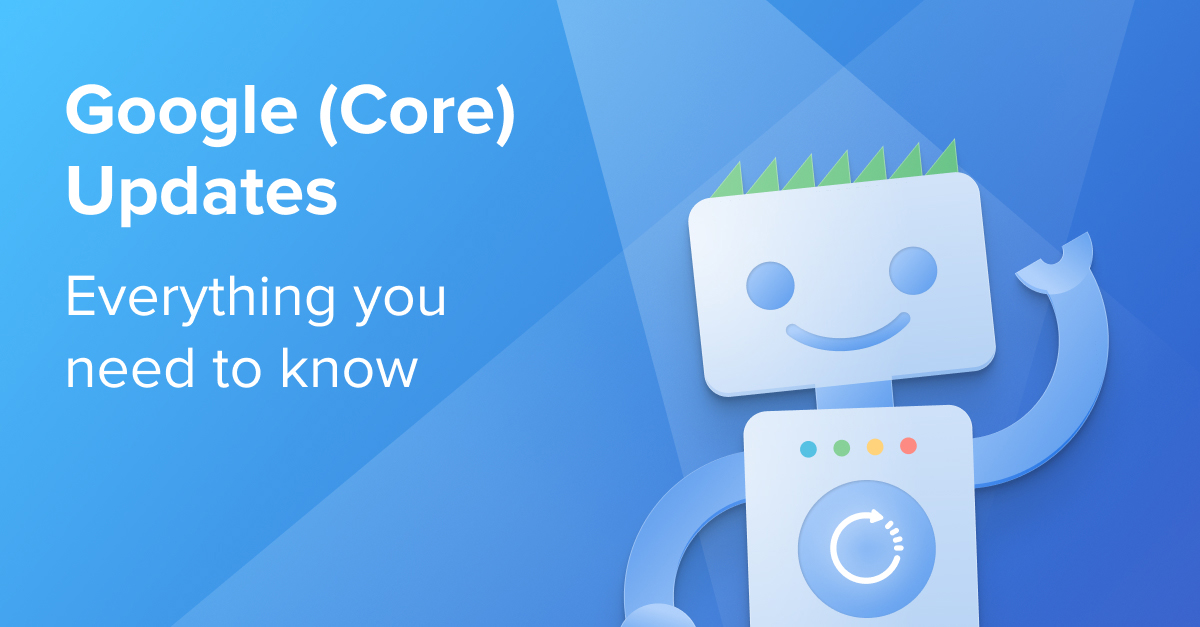
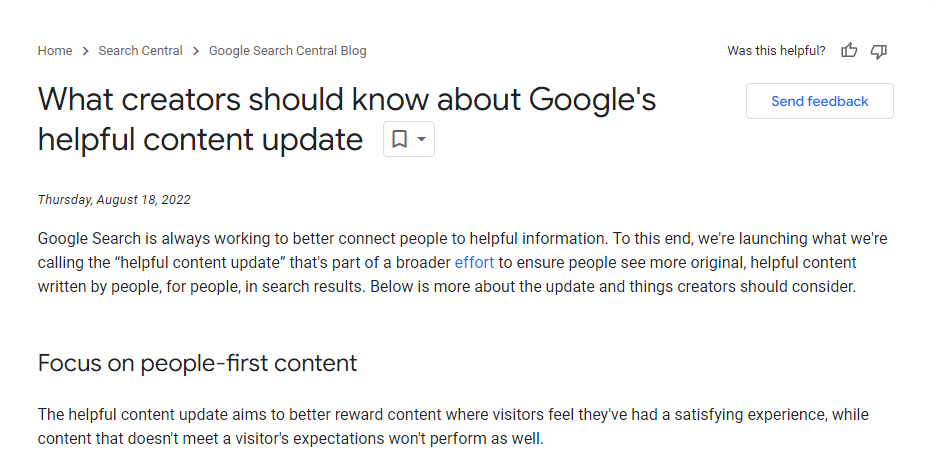
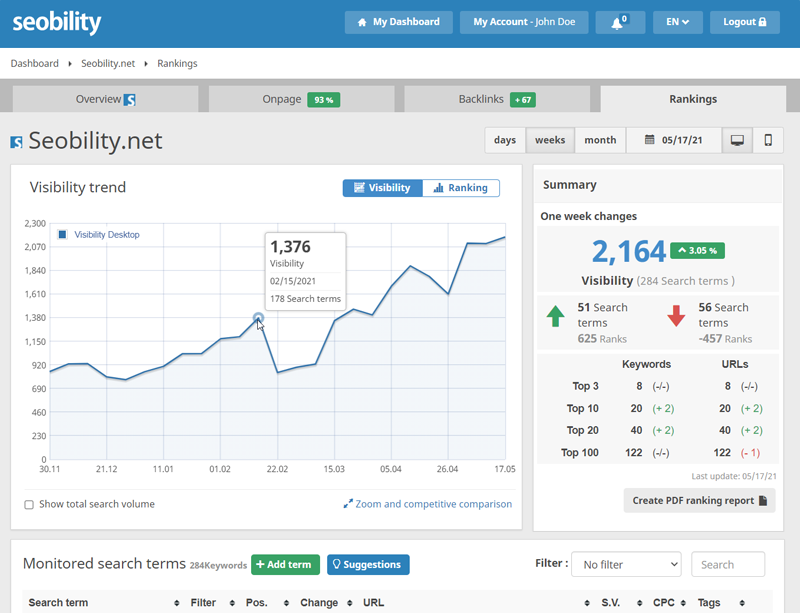


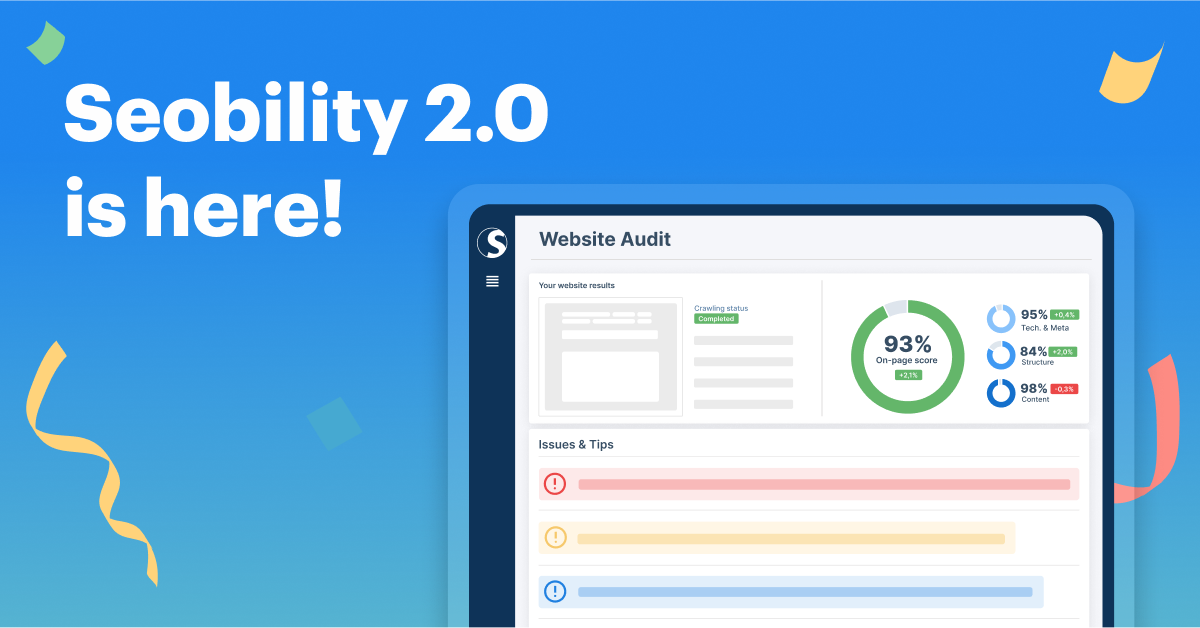
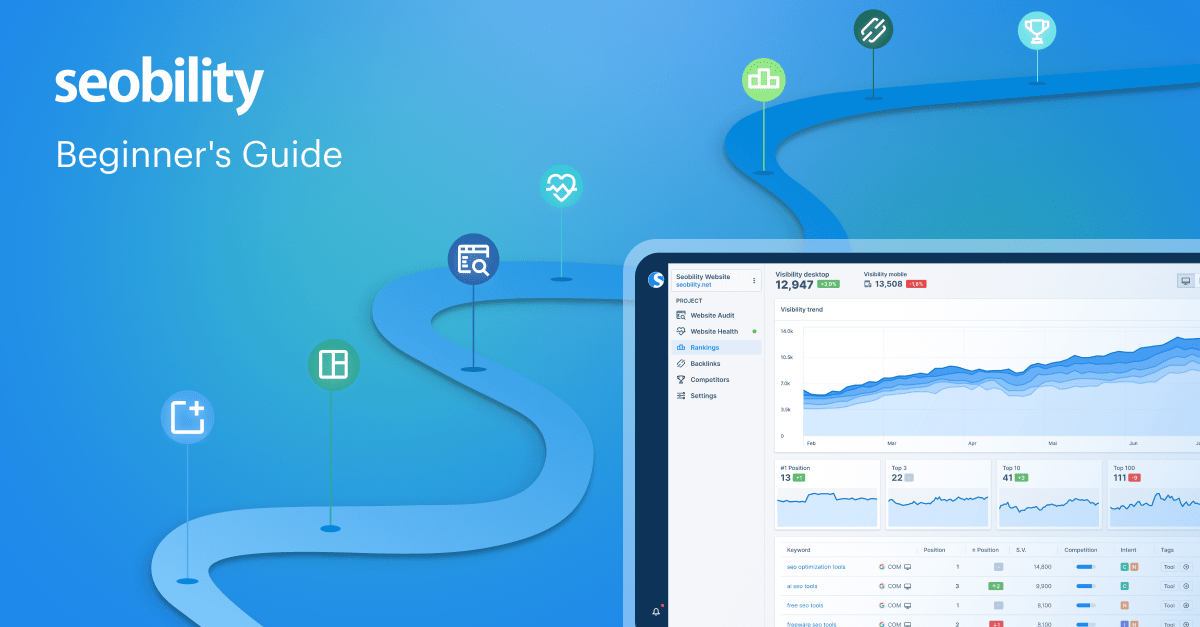
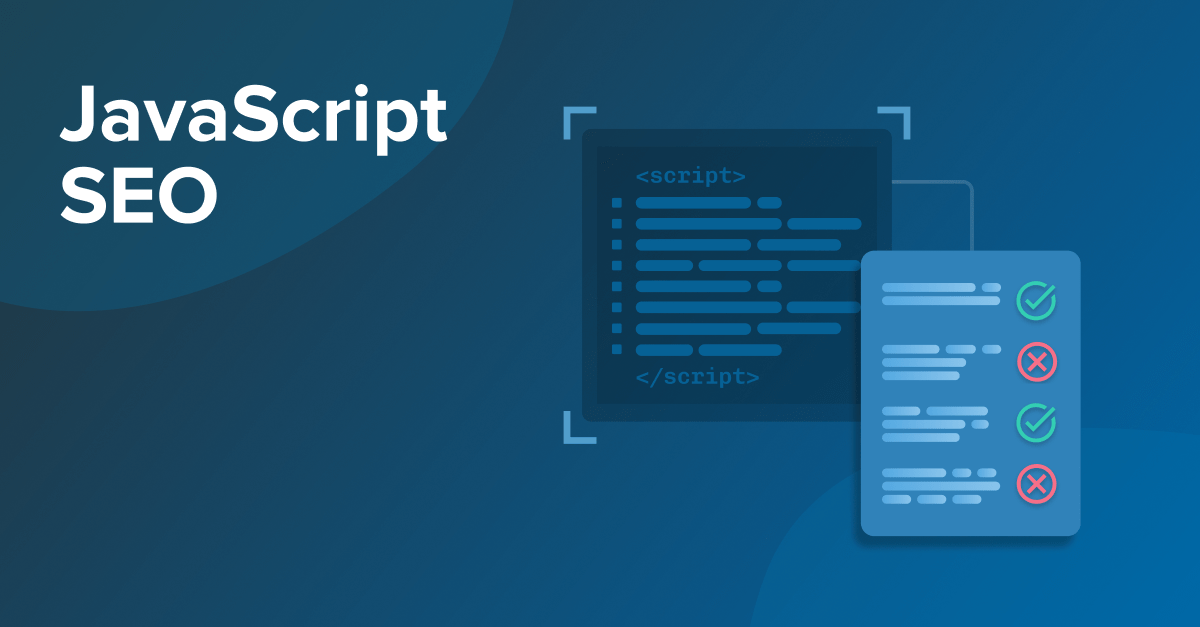
Thanks for this very useful article. I have used SEOBILITY extensively to optimize my site over the past few years with great success. I have been hit by the Google core update, but only in June, a whole month after the roll-out. I’m finding it difficult to recover despite making the improvements recommended.
Hey Chris,
Google’s May 2022 Core Update was completed on June 9, so it’s actually very unlikely that your traffic drop is related to this update. If you write an email to our customer support team (support@seobility.net), they will be happy to take a look into this with you!
Topic cluster inside one domain is what Google wants
Hey, thanks for your comment! Topic clusters are definitely a good way to structure your content and cover individual topics in a holistic way. But of course, there are other aspects as well that influence the quality of your content and that are important to Google (e.g. whether the content is written by a subject matter aspect, provides accurate and trustworthy information, offers something unique, etc.).
Thanks for sharing all of the updates. There are so many now that it’s hard to keep track.
Hi Kodulehe, you’re welcome! That’s exactly the reason why we created this article 🙂 Here you will always be up-to-date about the most important changes.